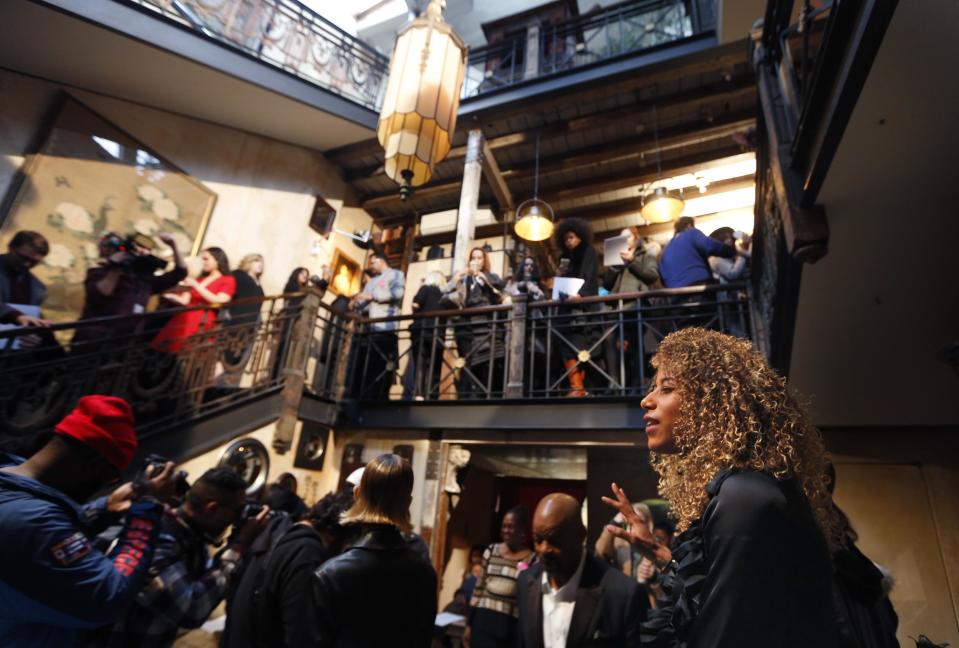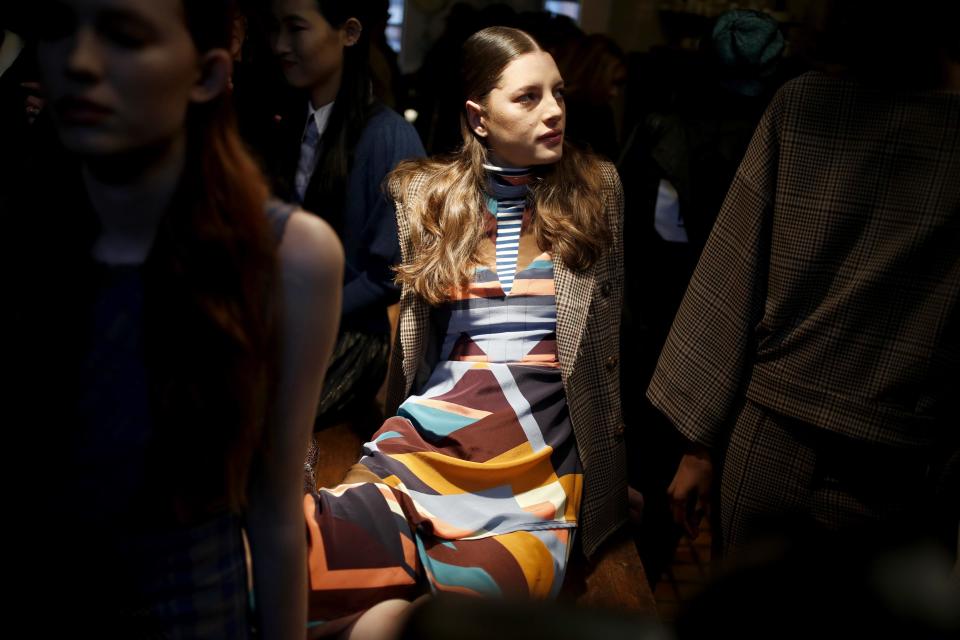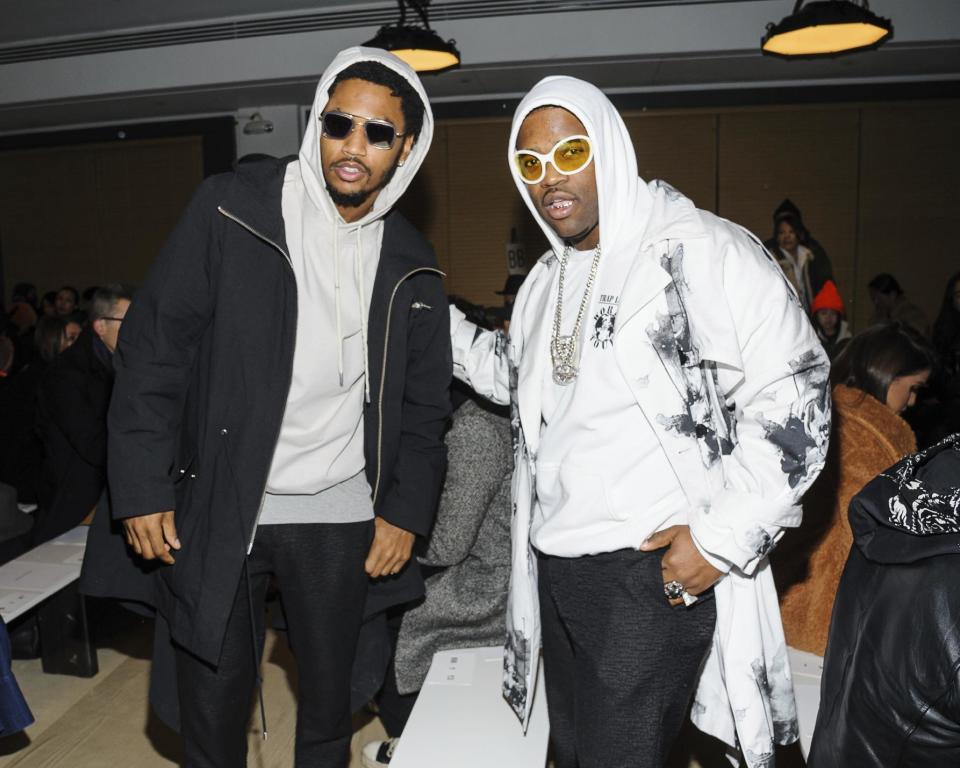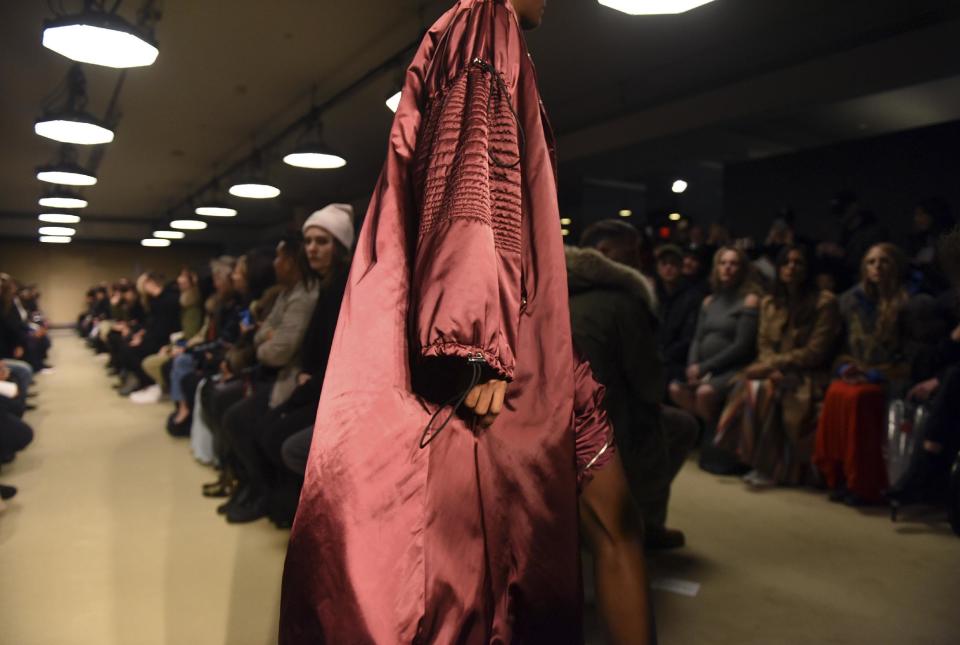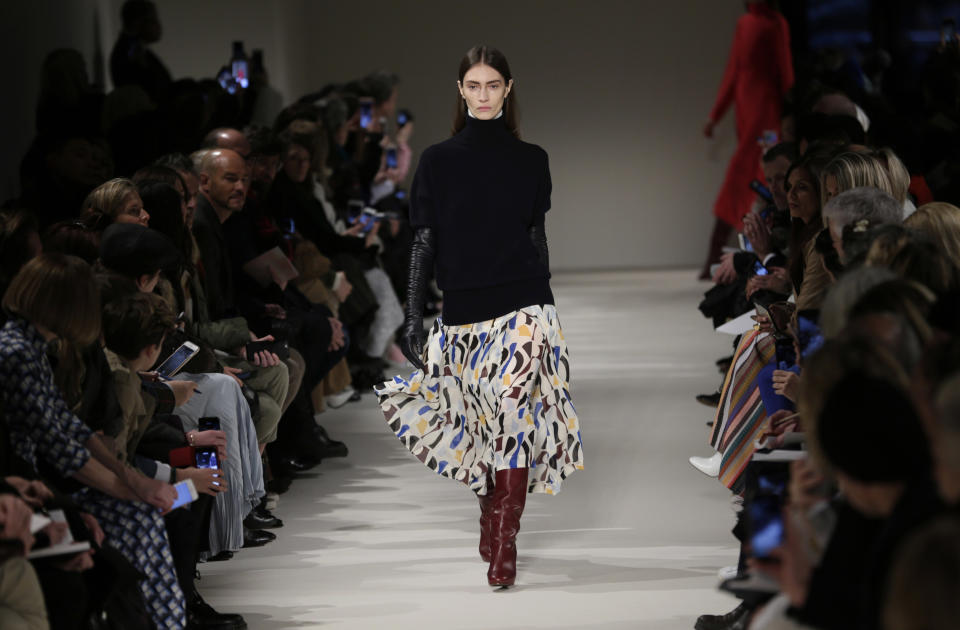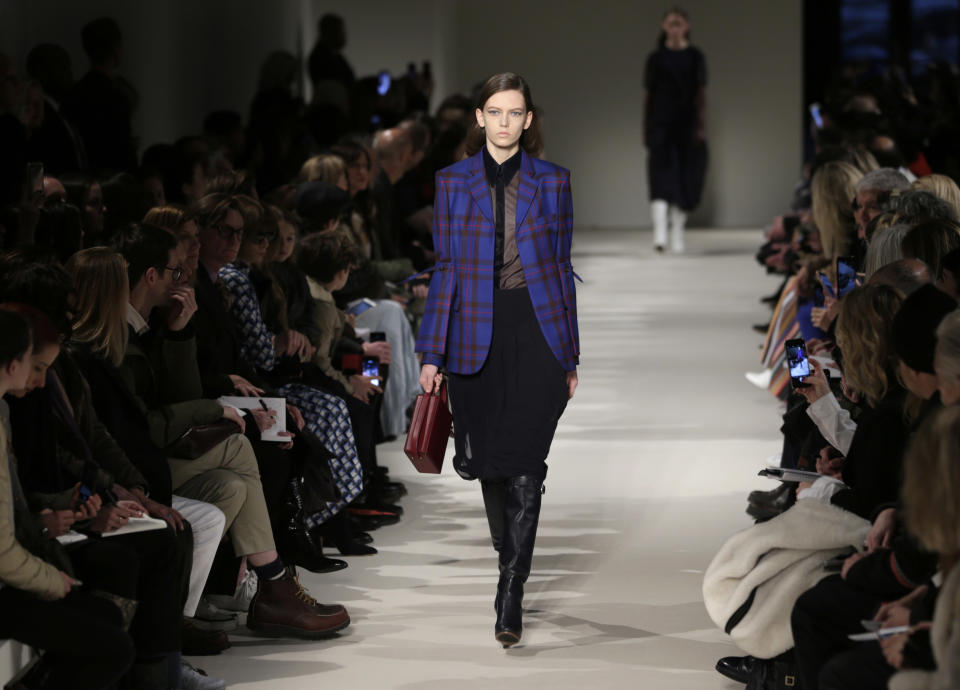Politics and poetry reign at NY Fashion Week
NEW YORK (AP) — There's bad Fashion Week weather, and there's REALLY bad Fashion Week weather. Fashion lovers had to be careful not to slip and break major bones Sunday as they maneuvered along slippery, slushy streets. Inside the shows, there was plenty of talk about politics, social change, and womanhood. There were even some soulful poetry readings.
Some highlights:
___
POETRY FOR THE SOUL, AT TRACY REESE
Visitors with tickets to the Tracy Reese show gathered outside a nondescript doorway on Manhattan's Hudson Street, waiting to walk up a narrow stairway.
Not many fashion shows take place in former sausage factories. Built in the mid-19th century, the space is now an antique-filled triplex house with gilded mirrors and wrought-iron balconies overlooking an atrium.
Reese had enlisted four women poets to read their work while guests navigated their way in and out of various rooms. With the setting and the soulful soundtrack, one might have forgotten the event was about clothes. But there were the models, posing in corners and on sofas or chairs or tables, sort of a living tableau.
Reese, who was a favorite designer of former first lady Michelle Obama, described her latest collection as "a celebration of the many facets of womanhood."
"More than ever, the world we inhabit demands that we, as women, be all things: strong yet feminine, nurturing yet stoic, seductive yet demure," she wrote in her show notes.
In her clothing, the designer featured ultra-feminine floral dresses with menswear-style plaid pantsuits. There was also an Asian influence in colorful kimonos, or beaded evening wear.
As for Reese herself, she wore a white T-shirt with the Angela Davis quote: "I'm no longer accepting the things I cannot change, I'm changing the things I cannot accept." Other members of her team wore sayings they had chosen, from figures like Amelia Earhart or Mrs. Obama.
The poets reading their work were Dorothea Lasky, Aja Monet, Leslie Reese and Jenny Zhang.
—Jocelyn Noveck
___
POLITICAL TALK AT PUBLIC SCHOOL
"We Need Leaders," read the motto on a number of ensembles at Sunday's Public School runway show. Even more pointed, perhaps, was the message on the hats: "Make America New York." And on the side: the number 44 ½, a reference to the Trump presidency.
Designers Dao-Yi Chow and Maxwell Osborne had already been using the "leaders" slogan before the election, but it recently took on new meaning for them, they said backstage. "With the timing of everything that's been happening with us here in our country and in the world, certainly that message rings truer now than it ever has," Chow said.
Osborne said the collection started from the idea of borders.
"What are borders?" he said. "How do you break those down? We kind of started from there."
Chow also gave his take on what's become the central question of Fashion Week: Should designers — or other artists — weigh in on politics?
"It's up to the artist," Chow said, "but I happen to feel that if you have a platform and can speak to a lot of people you should use that platform — not just to sell a lot of clothes or music or art, but you should also help to lead the conversation, lead the dialogue. Sometimes that's uncomfortable ... you have to challenge your own beliefs, break those down, build those up, do it over and over again, keep having that conversation."
Designs — for both women and men — included huge down jackets, oversized plaid or quilted shirts, generous bomber jackets and roomy overcoats. There was a deconstructed effect to some of the garments, such as large "snap sleeves" on a tan corduroy top that exposed the upper half of the arms, or down jackets that draped open to expose bare shoulders.
On this particular Sunday, one would have opted to cover those shoulders.
—Jocelyn Noveck
___
VICTORIA BECKHAM OFFERS A NEW TAKE ON OLD ENGLAND
Beckham was one designer who seemed, presciently, to have predicted the miserable weather when she was designing. There were roomy blazers and fluid, ribbed sweater dresses, and pants that were baggy but still flattering. There were long, filmy chiffon skirts or dresses, their lightness complemented by generously oversized jackets on top. Most appealing on a day like Sunday: Long, zipped sweaters that one could wrap oneself into and disappear.
The color palette included oxblood, navy and black — "gentleman's club colors," Beckham described it — inspired by British artist Paul Nash, whose work, she wrote in show notes, "draws on England's past, but translates that into striking contemporary forms." Beckham also used the artist's creations to inspire her bold prints. To go along with the more muted colors, there was the occasional burst of brightness, like a dress in lipstick red.
As for footwear, the idea seemed to be wearability. There were flat, very pointy buckled shoes, or wedge-heeled boots to go with dresses. Beckham's handbags were square, in the form of vanity cases. Another style touch was the addition of elbow-length leather gloves — some in a dashing gauntlet style — to many of the outfits.
"This season has something fundamentally, even quintessentially British about it, while reflecting a global outlook," Beckham suggested. "Thinking about my heritage in the context of a changing landscape, I wanted to offer outfit proposals and single garments that mix the familiar with the fresh and the new."
Her silhouettes were looser than in some previous collections. "It's more relaxed, more free," she said. "Body consciousness is traded for consciousness of the body."
—Jocelyn Noveck
___

 Yahoo News
Yahoo News 






